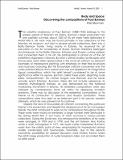Body and space: discovering the compositions of Paul Burman
Abstract
This article will discuss some aspects of Paul Burman's compositions. The creative endeavour of Paul Burman (1888-1934) belongs to the earliest period of Estonian art history. Born into a Baltic-German family, living mainly in Estonia, he received his art education in the Art Academies of Russia. Burman therefore belonged simultaneously to the Baltic-German, Estonian and Russian culture spheres and connected them in his art. Burman's creation reveals a complicated, many-faceted art concept. The article applies phenomenological and visual theories to Burman's work, discussing the role of body and space in his compositions of nude riders which develop from the creative imagination. Burman's compositions can be interpreted as an expression of an inner Ulysses, a constant wandering on horseback, passing through the rectangular space of the picture. The beholder is only witnessing a pause on this inner journey, painted with the suggestivity of a reverie.
Citation
Inferno: Journal of Art History Vol. 7 Article 2 2003
ISSN
1355-5596Type
Journal article
Description
Article 2 of 7 in an issue devoted to the visual culture of Poland and Eastern EuropePreviously in the University eprints HAIRST pilot service at http://eprints.st-andrews.ac.uk/archive/00000386/
Collections
Items in the St Andrews Research Repository are protected by copyright, with all rights reserved, unless otherwise indicated.

